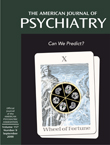Humankind’s darker side lies at the core of this immensely enthralling book. The title of this powerfully absorbing book is also its overarching theme: bad men (and women) actually do what good men (and women) merely dream about. Drawing on his several-decades-long professional experience as a treating and forensic psychiatrist, Simon meticulously, and sturdily, lays the groundwork for readers’ insights into their own psychological frailties. For some, Simon’s core theme—that all persons are born with emotional demons—may be quite unnerving and discomfiting, but for those who are stimulated to engage in introspective examination of their humanness, including its darker side, his bluntly revealing and sensitively written book offers wonderful opportunities for reparative insights into human behavior.
The current state of knowledge of human behavior is not complete. Simon is firmly intent on illumining the darker side of such behavior. In this riveting book, his very considerable writing talents, in synergy with his longstanding professional interest in human behavior, function, in effect, as a key unlocking the enigmatic, complex door to human violence and deviance. Simon hurls the reader unabashedly into the frightening world of human depravity. It is a world in which not-acted-on violence, aggression, and sadism are part of human normalcy. It is a world, moreover, in which the dark side of a person’s humanity is, frankly, inextricable. The sobering, albeit instructive, message that Simon endeavors assiduously to impart is that rather than futilely, and mistakenly, denying the bestial part of one’s humanness, one should instead honestly acknowledge one’s darker impulses and strive to harness such impulses or even possibly channel them for good purposes.
The bleak figure of human normalcy adumbrated by Simon is etched over the course of 12 chapters and includes such appendages as psychopaths, stalkers, rapists, serial sexual killers, and perpetrators of sexual misconduct in the helping professions. Close descriptions of real-life crimes often interspersed in the text serve as effective illustrations. Even though the various topics, fleshed out in sometimes sordid detail, are complex in nature and incompletely understood, the underlying, unifying theme of the chapters is that even “good” people wallow at times in the depravity of violent fantasies and dreams. As seen through Simon’s probing, candid eyes, the mental constitutions of the apparently good person next door and the blood-drenched human monster are remarkably, and possibly uncomfortably, similar.
Simon’s provocative thesis that patent, inescapable dark forces are sewn into the pristine fabric of all humans at birth opens a Pandora’s box of critical scrutiny. Can human nature, truthfully, be stripped down to the menacing figure envisaged by Simon? Terms central to his thesis (e.g., emotional “demons,” “dark impulses,” “dark side,” and “dark forces”) are psychological terms of art. Is a theme rooted in the soil of subjective, elusive-of-definition terms perhaps inscrutable and unprovable? Do Simon’s musings fall into the category of sweeping generalizations that oversimplify human behavior? Can a thesis formulated on the basis of a subpopulation comprising individuals with whom Simon has been professional involved be reliably extrapolated to fit all of humanity?
It might be intellectually stimulating, and enlightening, to forge Simon’s all-persons-have-a-“dark-side” thesis in the fire of critical examination by learned scholars of different persuasions drawn from outside the realm of psychiatry (e.g., scholars of different religions and philosophers).
Simon has accomplished the challenging task of crafting a book that is particularly well-tailored to fit laypersons and also fits clinicians and academicians interested in the enigma called human behavior. The book potentially is of immense value to students of human nature who are able and willing to be introspective and psychologically resourceful. Simon’s fascinating book surely is a scintillating contribution to the literature on human behavior.

